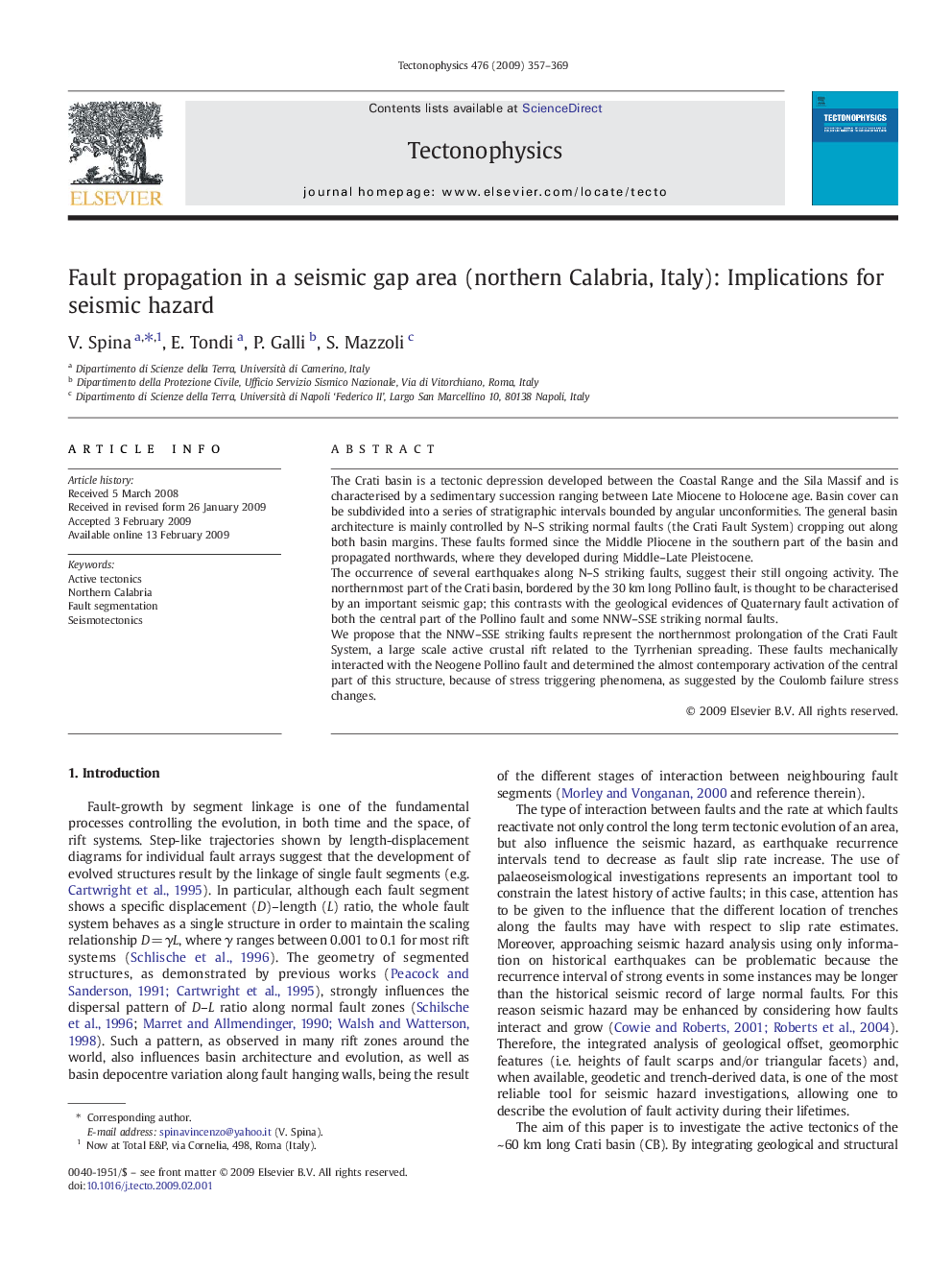| Article ID | Journal | Published Year | Pages | File Type |
|---|---|---|---|---|
| 4694041 | Tectonophysics | 2009 | 13 Pages |
The Crati basin is a tectonic depression developed between the Coastal Range and the Sila Massif and is characterised by a sedimentary succession ranging between Late Miocene to Holocene age. Basin cover can be subdivided into a series of stratigraphic intervals bounded by angular unconformities. The general basin architecture is mainly controlled by N–S striking normal faults (the Crati Fault System) cropping out along both basin margins. These faults formed since the Middle Pliocene in the southern part of the basin and propagated northwards, where they developed during Middle–Late Pleistocene.The occurrence of several earthquakes along N–S striking faults, suggest their still ongoing activity. The northernmost part of the Crati basin, bordered by the 30 km long Pollino fault, is thought to be characterised by an important seismic gap; this contrasts with the geological evidences of Quaternary fault activation of both the central part of the Pollino fault and some NNW–SSE striking normal faults.We propose that the NNW–SSE striking faults represent the northernmost prolongation of the Crati Fault System, a large scale active crustal rift related to the Tyrrhenian spreading. These faults mechanically interacted with the Neogene Pollino fault and determined the almost contemporary activation of the central part of this structure, because of stress triggering phenomena, as suggested by the Coulomb failure stress changes.
